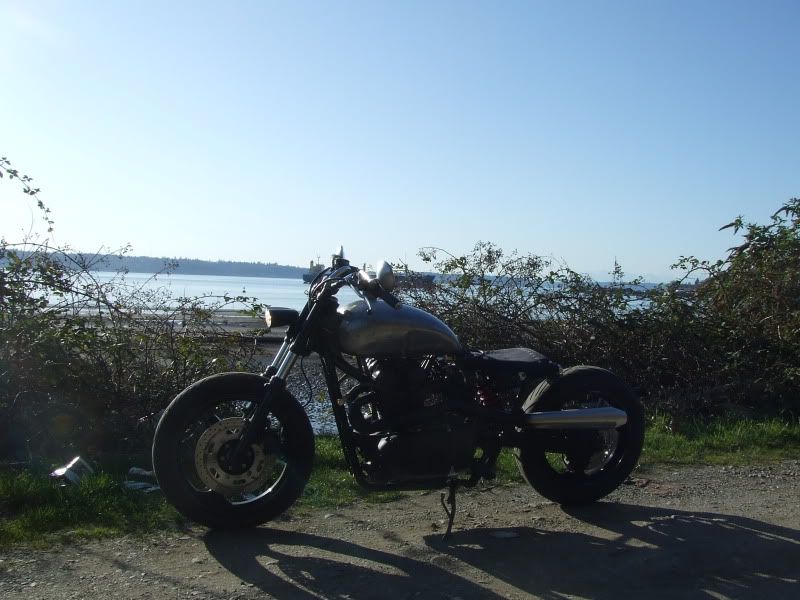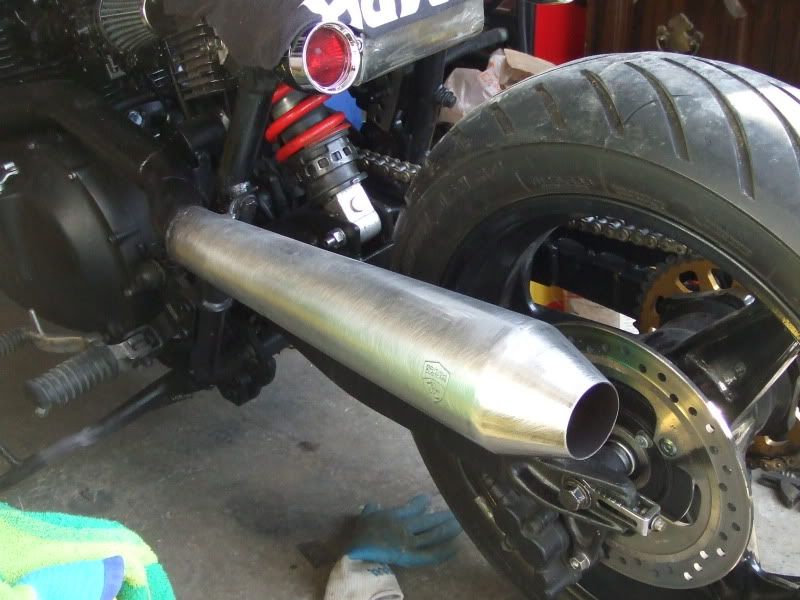Stroker,
try this method.
FIRST THINGS FIRST: SETTING STATIC SAG
Although this isn't strictly a riding technique there's a lot of false information about the 'correct' set up for a bike's suspension. The one main thing that most of these articles miss is the most crucial - setting the sag correctly.
The sag range will be the same for everyone but some of you will find that you will need to change springs to get into that right range. Race bikes, generally, need harder setting than road bikes as they ride on smoother surfaces. Road bikes have a huge range of dips, bumps and potholes to cope with so need to set slightly softer.
Most riders will have different preload settings, thanks to weight differences, but all will need to be in the same range for the suspension to work at its optimum range, namely its middle third.
Without the sag set right the damping will never be able to work at its best, as it will be trying to overcome the effects of a badly set spring. Don't forget that production bike suspension systems are designed to work with a hugely varying type of rider on board. It has to cope with very heavy riders to very light riders as well as aggressive riders to steady riders and all points and weights in between.
Therefore, a comprimise is required.
So what is sag? There are two types, Static and Loaded. Static sag is the amount the bike settles under its own weight. Loaded sag is the amount the bike settles with a rider on board.
To check that you have the right rate of spring you will need to set both the static sag AND the loaded sag, just doing one or the other is only getting half the story.
Here's what you will need to check and set your sag.
• A tape measure.
• A pen and paper.
• Tools to adjust the front and rear preload.
• Three strong friends.
STATIC SAG
Setting the static sag is easier than the loaded but it will still need a set of strong hands to keep the bike off the floor while you take your measurements. Lift the back wheel of the bike off the floor by pulling the bike over on its side stand, or putting it up on the centrestand.
Now, using your tape measure, take a reading from the centre of the rear wheel spindle to a point on the tailpiece that is directly above the spindle. It will be helpful to mark that point on the tailpiece for the future reference.
Write down the measurement and we will call this reading A.
Measurement A will remain the same throughout the procedure so you only need this reading once. Now put the bike back down on its wheels and hold it upright. You will see the bike settle under its own weight. Measure the distance from the spindle to the tailpiece. We will call this reading B.
Subtract B from A. This is your rear static sag. Keep a note of it just in case you want to change it back. Ideally you are looking for 5-10mm on a race bike and 15-20mm on a road bike.
Either compress or loosen off the spring to get into this range. The adjuster is normally a pair of rings on top of the spring. One of them is a locking ring and the other is the adjuster. You will need a C-spanner to make the adjustment. If you don't have one then a hammer and drift will do.
Now lift the front of the bike off the floor using the same side stand method. Measure from the bottom yoke to the top of the stanchion. We will call this measurement C. Like measurement A this will remain the same throughout.
Drop the bike back onto two wheels and take the reading again. We will call this D.
Subtract measurement D from C. This is your front static sag reading. Keep a note of it just in case you want to change it back. Ideally you are looking for 10-20mm on a race bike and 20-25mm on a road bike. Either compress the spring or loosen it off to get in this range. The adjuster is the bit which pokes out the top of the forks, or if if the front is non-adjustable, change the length of the spacer.
LOADED SAG
If all is well we have managed to get within range but this isn't the whole story. We now need to take into account the rider's weight.
Sit on the bike and have one friend steady the front, one steady the back and the other ready to measure. Sit the bike upright. Now WITHOUT touching the front or rear brakes bounce up and down a few times in the seat and then assume your normal riding position. Measure the rear of the bike as before and we will call this measurement E.
Subtract E from A and this gives you your rear loaded sag reading. Try and get between 20-25mm on a race bike and 30-40mm on a road bike by adjusting the preload as before.
Now do the same for the front. We will call this measurement F.
Subtract F from C and try to obtain 25-35mm on a race bike and 35-50mm on a road bike.
If you can't get in these ranges for BOTH Static and Loaded then you will need to change the spring for a harder or softer one. Harder if you're outside the range and softer if you are inside the range.
Good luck.





